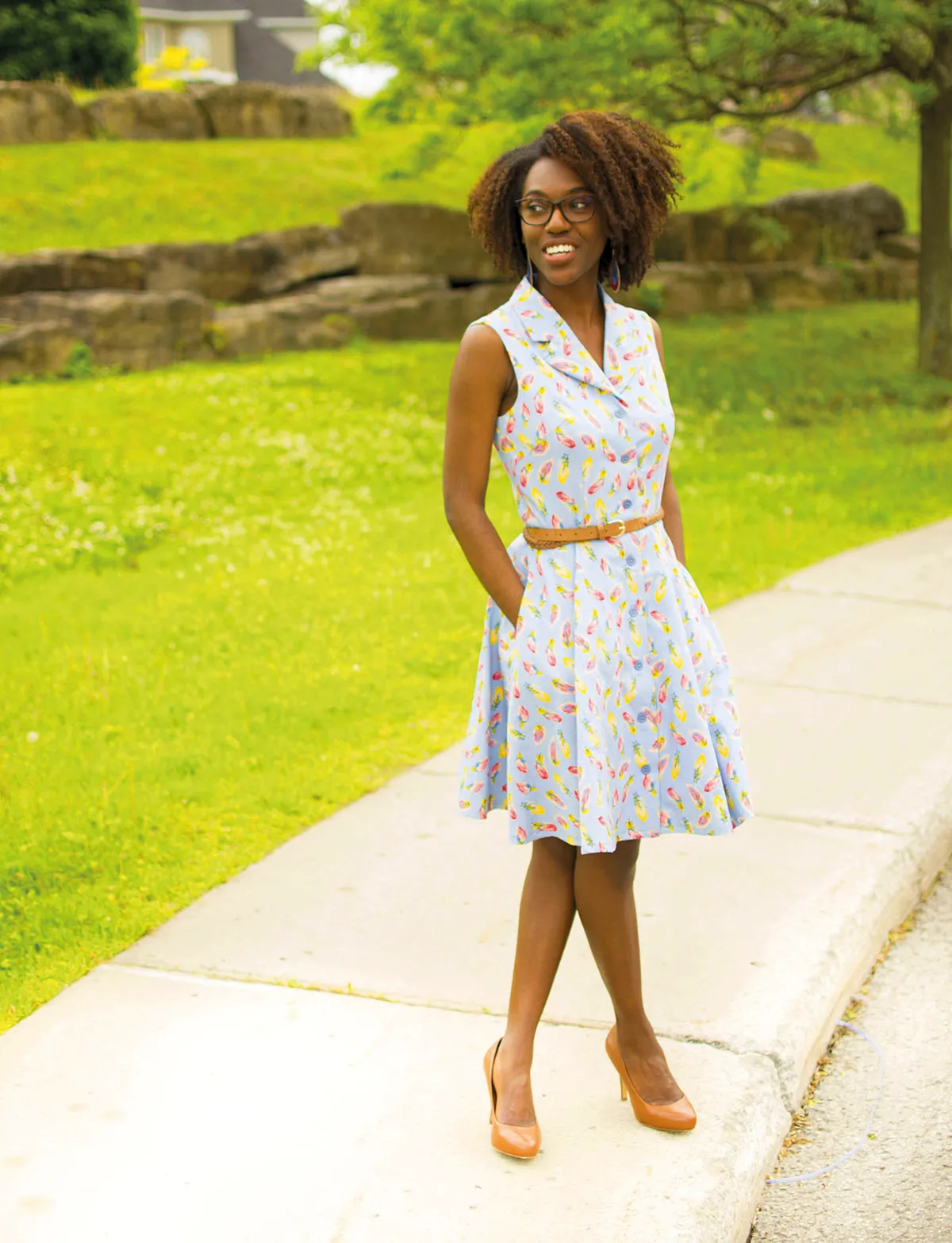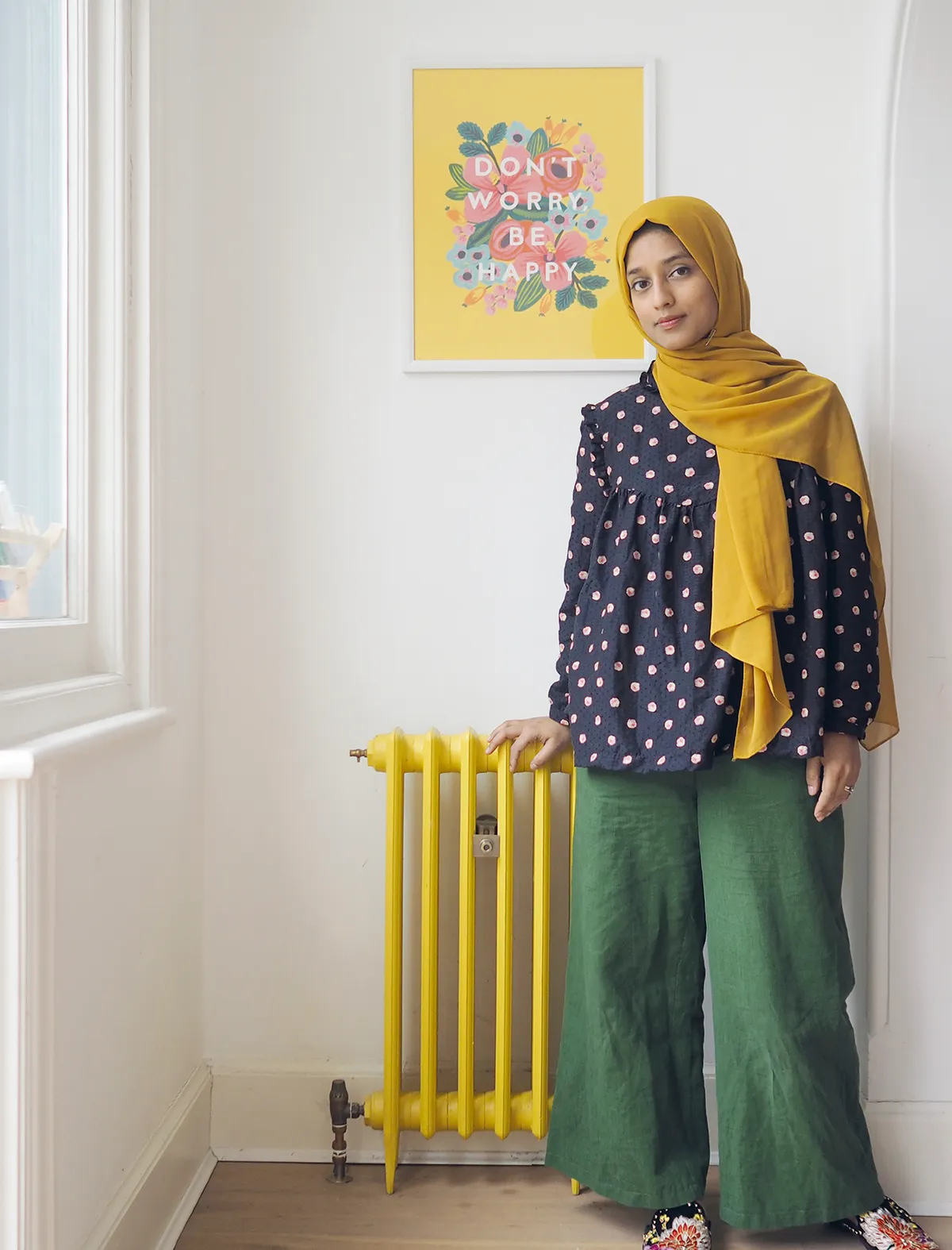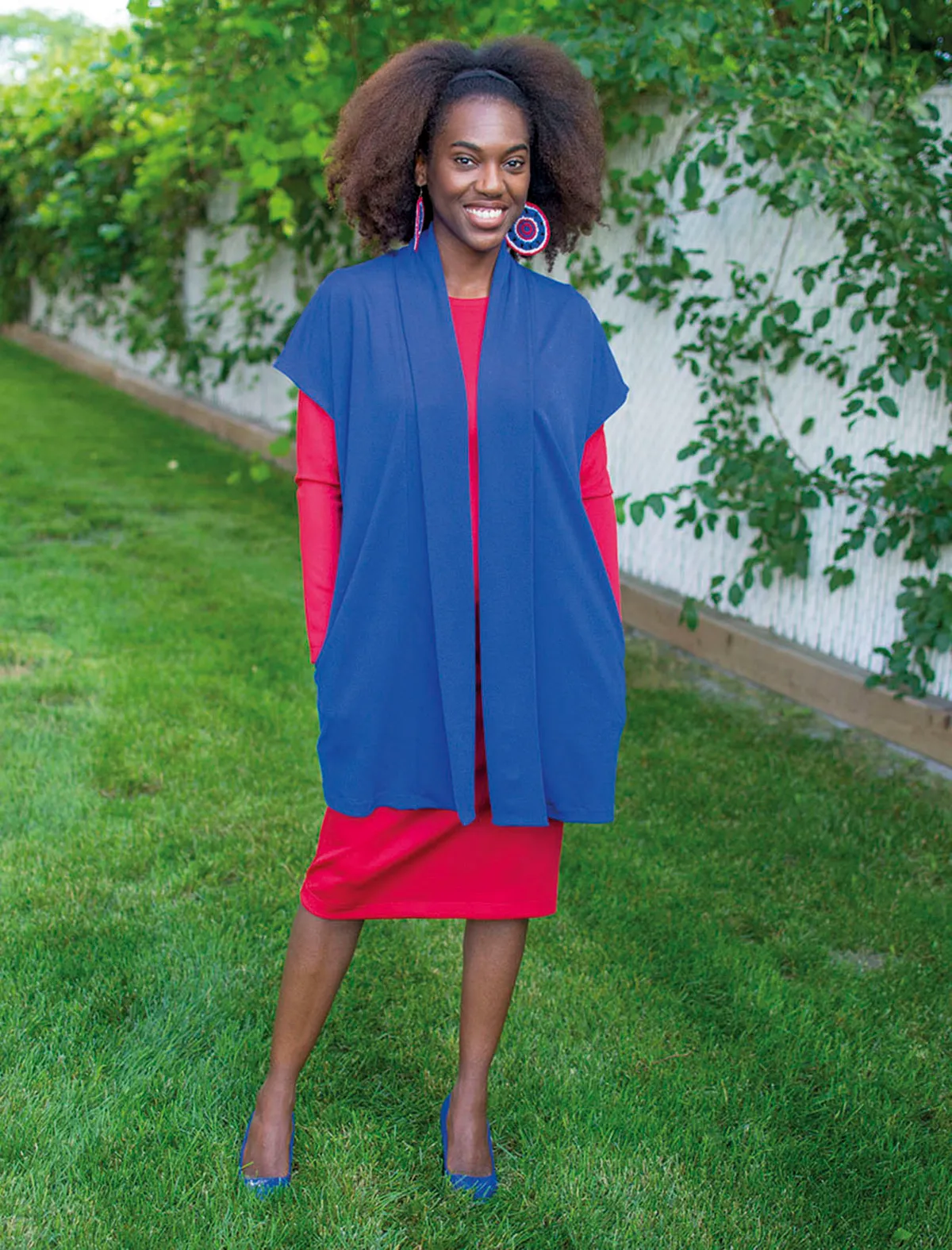There are many wonderful things about sewing, but probably one of the best is that it brings like-minded makers together. Whether you’re in a virtual or real-life sewing room, the friendly and welcoming creative community is a beautiful melting pot of different cultures, bringing with it a unique blend of styles, tastes and techniques. Yet, as uncomfortable as it is to admit, when you look at mainstream magazines, products, blogs and patterns in the craft sector, it doesn’t take long to see that diversity and inclusivity is all too often lacking.
It’s one of the reasons why junior doctor and former Great British Sewing Bee 2016 quarter finalist Rumana Lasker launched #SewInColour. It started as a study of sewing magazine covers. “I decided to do a bumper review of issues over five different sewing magazines, from January 2017 to September 2018,” Rumana explains on her website. “Out of 102 issues, six of them featured a model of colour on the front.” In light of this, she then launched her #SewInColour campaign on Instagram, calling on fellow sewists and crafters to show their support and help bring about change. It quickly gained a lot of traction, helping to form part of a bigger social movement on Instagram from a wealth of crafters – including @tina.say.knits and @frannemade to name but a few – that were sharing their stories and having in-depth discussions on wider issues of representation in the crafting sector.
Main photo © www.theravelout.com Words by Sarah Gane. This article was first featured in Simply Sewing magazine, and is featured here on Gathered with thanks to all who contributed.
“Rumana’s #SewInColour campaign has done some brilliant work in terms of raising awareness and starting some very tough conversations about inclusivity and diversity on the cover of popular sewing magazines,” confirms Sylvia Nettey, aka The Ravel Out.“Although she was initially referring to the lack of or very little representation of diverse models on the cover of popular sewing magazines, for me it resonated beyond sewing magazines…it made me take a step back and look at the part of the sewing community that I am exposed to on Instagram, including sewing companies that serve us as sewers, and saw similar issues with some of them.”

For blogger and sewing teacher Judith 'Dee' Demonsieur (www.judithdeesworld.com), shedding light on this issue was long overdue: “As a woman of colour, it has been hard to find people like me on the cover and inside of crafting magazines or on pattern envelopes. To be honest, I had gotten used to it… however, since Rumana’s campaign, I’m more aware of what is thrown at us and I’m expecting better from companies targeting the crafting community.”
“I admire Rumana for having raised this issue and challenged magazines to use more diverse models on their covers,” adds Atia Azmi of www.thebrightblooms.com. “It was the first time I had seen this raised on social media; it definitely had an impact and made people think. I have seen some signs of progress in recent months, but there is still work to be done to result in real change.”

Pushing for progress
There’s no doubt that this issue is an uncomfortable one to discuss. In fact, some people’s reactions – particularly for those who identify as white – might be to change the subject for fear of causing offence, or to stand on the sidelines on the grounds they “don’t see colour”. However, “not seeing colour is problematic, because it erases the real problems that people of colour face in society,” says Atia. “‘Not seeing colour’ provides an easy way for people to shut down the discussion about the structural nature of racism. Race, religion and culture are integral parts of our identities, and by denying that they exist, we are simply ignoring the impact they have on people’s lives. Acknowledging colour is not a bad thing – we have to be willing to recognise prejudices we may have and be willing to make changes and educate ourselves.”
Our community is so diverse. It’s amazing to interact with and learn from fellow makers.
One of the first places to start could be our own Instagram feeds. How many of the sewists you follow are BIPOC (Black, Indigenous, People of Colour), or are members of the LGBTQ+ (Lesbian, Gay, Bisexual, Transgender and Queer or Questioning) community? How many have a fuller figure, or have disabilities? The results may surprise you. One of the fantastic things about social media, though, is that we have the power to change what we see. Seeking out a variety of people to follow and engage with can widen our world view and enrich our online experiences – it’s a win-win.
#SewInColour
Find out more about Rumana Lasker’s brilliant campaign over on her website, www.thelittlepomegranate.co.uk, or join in and show your support on Instagram @thelittlepomegranate #SewInColour.

Joining the conversation
Having said that, stepping up and showing support against injustice and pushing for visibility is also vital. It takes a tremendous amount of courage and vulnerability to speak up in public online forums, especially for BIPOC and members of the LGBTQ+ community who are more likely to face difficulties and negativity in day-to-day life – so by ensuring people are heard and feel valued helps to share the load among the wider community. As the great Martin Luther King, Jr. once said: “Our lives begin to end the day we become silent about things that matter.” This issue affects us all, so by posting messages of support, listening to stories, asking questions, asking for change – it can all make a difference.

“To me diversity within the sewing community refers to all the characteristics that make us different such as race, gender, age, ethnicity, physical attributes, beliefs, values,” Sylvia tells us. “Our community is so diverse and it’s amazing to interact with and learn from fellow makers with both similar and different perspectives from mine. Diversity is such a beautiful thing, but without being inclusive, that beauty is lost. Inclusivity values and respects our differences and helps create a supportive community where everyone shares a sense of belonging and feels safe. I think that the sewing community is continuously striving to be inclusive by having some very important conversations when raised by a member of a group within the community, and I love that openness and willingness to learn while we enjoy this passion we have in common.”
Hopes for the future
“To be honest, ever since this campaign started, I’ve seen a lot of effort made by patterns companies and craft magazines,” says Judith. “From size ranges to plus-size models, to models of all colours, I’m seeing a lot of improvements. For example, one of the big four pattern companies featured a woman wearing a hijab on their pattern envelope. I’ve also seen a beautiful magazine cover where a woman of colour was wearing a gorgeous African print dress. Now, that is what I want to see among everything else. Not just once in a while. I’m just wishing that all of it continues…”
For Atia, it goes beyond covers of magazines: “I would like to see more diverse designers and makers represented, as well as simply the models. There needs to be genuine inclusion rather than box-ticking, so companies should look at the relationships they have and the people they employ, to create an inclusive culture within their businesses. As individuals, we can all be more aware of whether our social spaces, online and offline, include people of other backgrounds and actively work towards being more welcoming of diversity.”
Sylvia agrees: “I think it is important for companies to understand that representation matters. Including more diversity in terms of race, size, age, etc is a sign of respect and openness, and shows that you are willing to learn. Nobody is perfect, nobody knows it all, so making efforts to represent a diverse population while continuing to have frank, open, respectful conversations is such a great step and can help to create a positive change. We all need to learn from each other, be allies, and unlearn any harmful things that alienate any certain group.” She continues: “I hope all institutions and companies are willing and open to have respectful conversations about this. I understand that it is not an easy topic, but it needs to happen. I have already seen many companies do this with the recent conversation about size inclusivity, and committed to make changes to represent the clients they serve. For individual sewists: get out of your comfort zone! Do not isolate yourself. Follow others who do not necessarily look like you, support them, converse with them, share your story, listen to others, and you will be amazed by what you will learn. It’s a beautiful community and I hope it continues to be that.”
Refresh your feed
Looking for new talented makers to be inspired by on Instagram? Our contributors share their must-follows.
Atia:
Sylvia:
- @classyfiedlife
- @stephnappa
- @sablecraft
- @createandpray
- @eimymarie
- @faithstjules
- @thecornyrainbow
- @victorialucilleanne
Dee:
From the team
The Simply Sewing team would like to take this opportunity to give thanks to the contributors of this piece, and also to the wonderful members of the sewing and wider craft community who are putting in the work and continually pushing for change and fairer representation for all. We strongly believe that everyone is welcome in the sewing room. While there is always more work that can be done, we as a team are continually striving to ensure a fairer balance and visibility for all within the magazine. Thanks, as always, to all readers of the magazine for your continued support.
